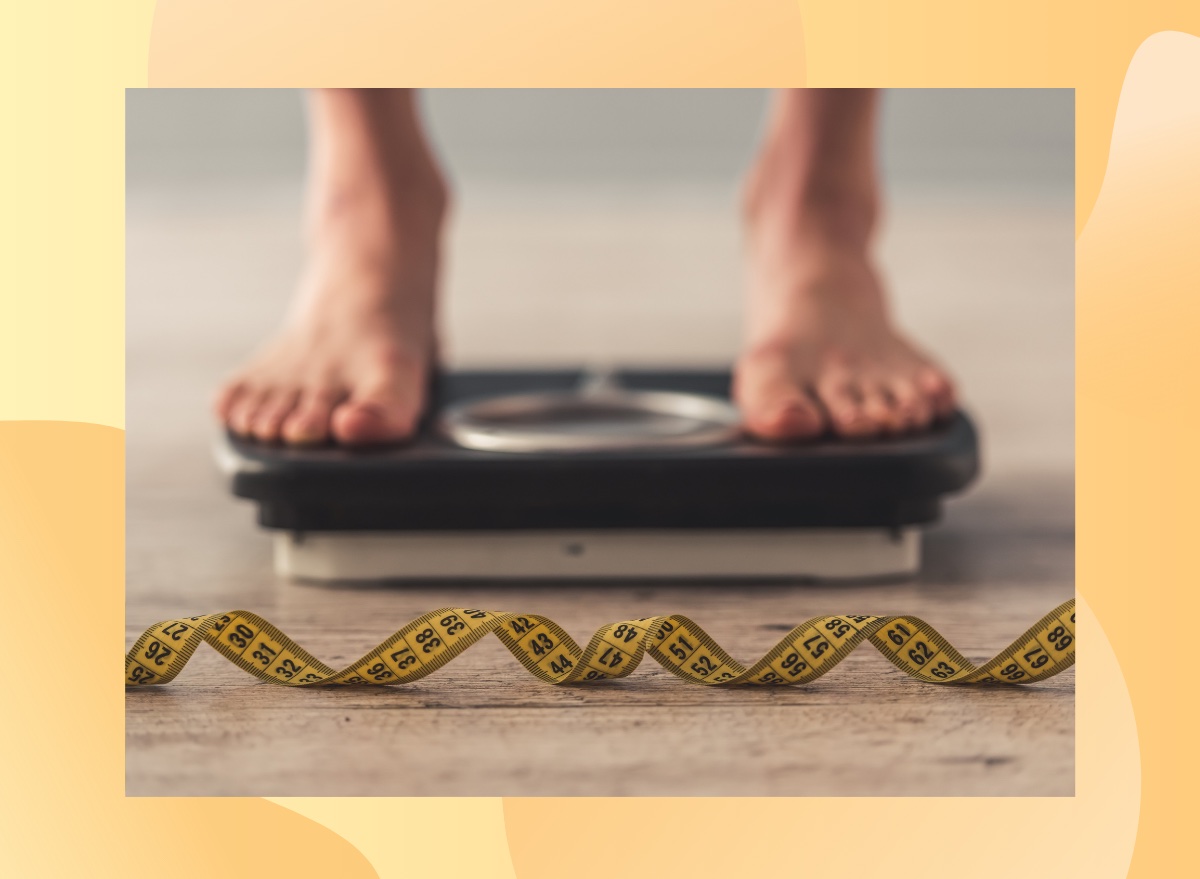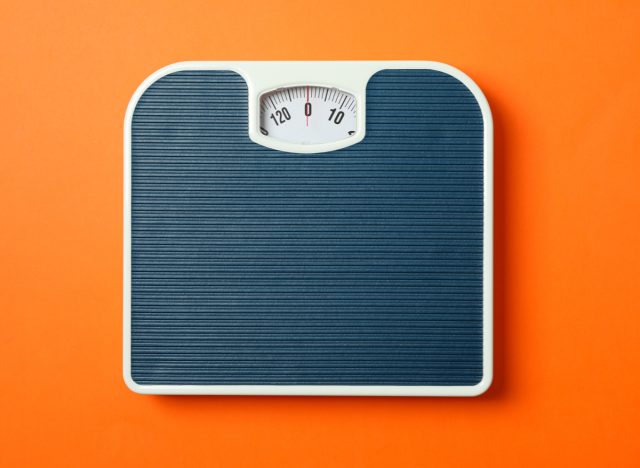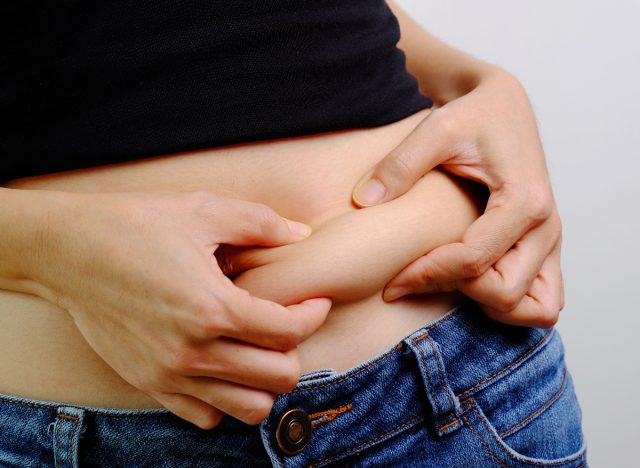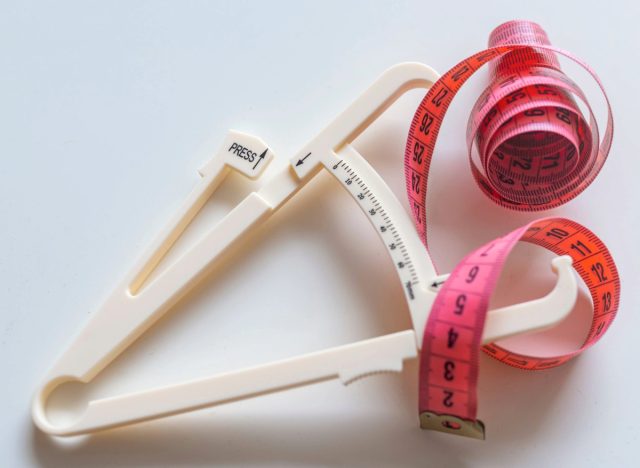Losing Weight vs. Losing Fat: What's the Difference?

If you're considering a weight-loss journey, there are understandably many thoughts and questions running through your mind. You're likely curious about the healthy diet tweaks and the right exercise program to incorporate into your routine for safe and sustainable weight loss. Beyond that, you may also be wondering what the difference is between losing weight and losing fat. We spoke with experts who break it down for you.
Continue reading to learn more, and when you're finished, be sure to check out these 10 Ways To Maximize Your Walking Workout for Faster Weight Loss.
Losing weight versus losing fat: What's the difference?

Let's first address weight loss. "Weight loss is the overall decrease in weight from all areas of the body," explains Annette Snyder, MS, RD, CSOWM, LD, from Top Nutrition Coaching. "This includes muscle, water, and fat."
When you step onto a scale, you'll see how much weight you've lost. You won't, however, be able to see how much fat you've lost.
"Fat loss is just that—specific decrease in stored fat from the body," Snyder adds. "Changes in body fat don't always match the amount of weight change on a scale."
Should your goal be to lose weight or body fat?

When you lose weight, you can also lose lean muscle. That being said, the number you see on the scale may not reflect your overall condition.
"Dropping weight quickly frequently results in loss of muscle mass due to the amount of caloric restriction needed. That can, in turn, lead to easier weight regain and unhelpful changes in metabolism and digestion down the road," Snyder tells us. "For this reason, a slower, more sustainable weight change is recommended."
Focusing on losing body fat is the name of the game, as your fat-to-muscle ratio is crucial for overall health and wellness. Accumulating body fat—especially visceral fat, which surrounds your organs—heightens your risk of various health concerns, Snyder points out.
"Insulin, the hormone we make that shuttles glucose to where it's needed, doesn't work as well if there are too many fat cells—and the body's cells become resistant to its action (this is part of what occurs in type 2 diabetes)," she says. "It's important to know that when we lose fat, we lose what's stored in the fat cells, but the cells themselves remain permanently. They just shrink or grow depending on the need, and once the volume capacity of a fat cell is reached, new cells are formed to accommodate."
Lisa Young, Ph.D., RDN, the author of Finally Full, Finally Slim, a nutritionist in private practice, and a member of our Medical Expert Board agrees, telling us, "Aim to lose fat to maintain lean body mass, as losing weight can also indicate muscle loss. A reduction in body fat helps improve body composition, reduce the risk of chronic diseases, and improves heart health."
Keep in mind that not all fat is "bad," and it's important to have an "essential amount" for your body to function properly, Snyder stresses.
How can you distinguish fat loss?

An easy way to pinpoint fat loss is by being mindful of how your clothing fits, specifically around the waistline. "Changes in fit may be the first indicator of fat loss," says Snyder. "Taking measurements at the waist and hips can also provide ongoing insight—as long as the areas measured are consistent."
In addition, you may find it helpful to use a body composition scale—just keep in mind that things like how hydrated you are can impact the scale's reading.
"Skinfold calipers are also still an option," Snyder offers. "This tool gathers or 'pinches' fat at a specific location and measures how much is being squeezed by the calipers. There are specific body areas to check, such as the tricep area, and it's important to use the same areas correctly and consistently to measure progress."









